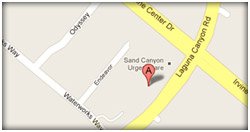Brief Summary
XOPENEX HFA Inhalation Aerosol is a pressurized metered-dose inhaler that produces an aerosol for oral inhalation.
It contains a suspension of micronized levalbuterol tartrate, propellant HFA-134a (1,1,1,2-tetrafluoroethane), Dehydrated Alcohol USP, and Oleic Acid NF.
The active component of XOPENEX HFA Inhalation Aerosol is levalbuterol tartrate, the (R)-enantiomer of albuterol. Levalbuterol tartrate has the chemical name (R)-a1-[[(1,1-dimethylethyl)amino]methyl]-4-hydroxy-1,3-benzenedimethanol L-tartrate (2:1 salt).
Levalbuterol tartrate is a relatively selective beta2-adrenergic receptor agonist.
It is a white to light-yellow solid, freely soluble in water and very slightly soluble in ethanol.
Levalbuterol tartrate is the generic name for (R)-albuterol tartrate in the United States.
XOPENEX HFA Inhalation Aerosol does not contain chlorofluorocarbons (CFCs).
Mechanism of Action
Activation of beta2-adrenergic receptors on airway smooth muscle leads to the activation of adenylate cyclase and to an increase in the intracellular concentration of cyclic-3', 5'-adenosine monophosphate (cyclic AMP). The increase in cyclic AMP is associated with the activation of protein kinase A, which in turn, inhibits the phosphorylation of myosin and lowers intracellular ionic calcium concentrations, resulting in muscle relaxation. Levalbuterol relaxes the smooth muscles of all airways, from the trachea to the terminal bronchioles. Increased cyclic AMP concentrations are also associated with the inhibition of the release of mediators from mast cells in the airways. Levalbuterol acts as a functional antagonist to relax the airway irrespective of the spasmogen involved, thus protecting against all bronchoconstrictor challenges.
Proven Uses
XOPENEX HFA (levalbuterol tartrate) Inhalation Aerosol is indicated for the treatment
or prevention of bronchospasm in adults, adolescents, and children 4 years of age and
older with reversible obstructive airway disease.
Side Effects
Common adverse effects of treatment with inhaled beta-agonists include palpitations,
chest pain, rapid heart rate, tremor, and nervousness.
In addition, XOPENEX HFA Inhalation Aerosol, like other sympathomimetic agents, can
cause adverse reactions such as hypertension, vertigo, central nervous system
stimulation, sleeplessness, headache, and drying or irritation of the oropharynx.
Large doses of intravenous racemic albuterol have been reported to aggravate preexisting
diabetes mellitus and ketoacidosis.
XOPENEX HFA Inhalation Aerosol may produce significant hypokalemia and paradoxical bronchospasm.
Precautions
The action of XOPENEX HFA Inhalation Aerosol should last for 4 to 6 hours.
XOPENEX HFA Inhalation Aerosol should not be used more frequently than recommended.
Do not increase the dose or frequency of doses of XOPENEX HFA Inhalation Aerosol without consulting your physician.
If you find that treatment with XOPENEX HFA Inhalation Aerosol becomes less effective for symptomatic relief, your symptoms become worse, and/or you need to use the product more frequently than usual, you should seek medical attention immediately.
While you are using XOPENEX HFA Inhalation Aerosol, other inhaled drugs and asthma medication should be taken only as directed by your physician.
If you are pregnant or nursing, contact your physician about use of XOPENEX HFA Inhalation Aerosol.
Priming and Cleaning
It is recommended to prime the inhaler before using for the first time and in cases where the inhaler has not been used for more than 3 days by releasing 4 test sprays into the air, away from the face.
Keeping the plastic actuator clean is very important to prevent medication build-up and blockage. The actuator should be washed, shaken to remove excess water and air dried thoroughly at least once a week. The inhaler may cease to deliver medication if not properly cleaned.
SHAKE WELL BEFORE USE.
Storage
- Store between 20° and 25°C (68° and 77°F; see USP controlled room temperature).
- Protect from freezing temperatures and direct sunlight.
- Store inhaler with the actuator (or mouthpiece) down.
- Contents under pressure. Do not puncture or incinerate.
- Exposure to temperatures above 120°F may cause bursting.
- Avoid spraying in eyes. Keep out of reach of children.








